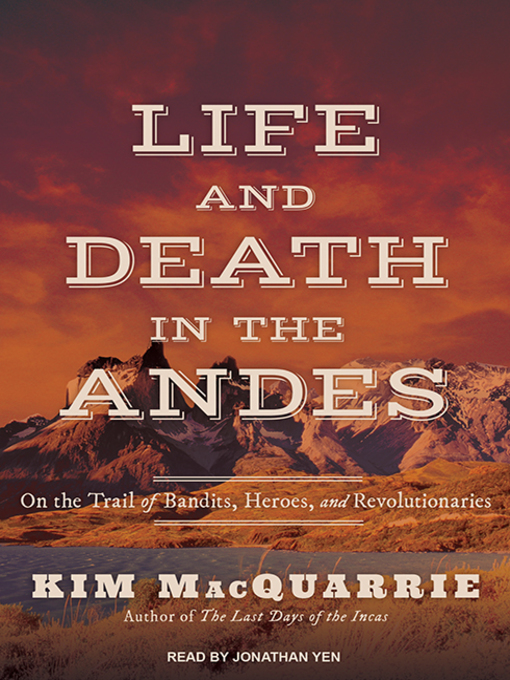

Part history and part travel narrative, MacQuarrie’s book is as richly detailed as it is deeply felt. Instead, they found a community of indigenous people to belong to and helped revitalize the dying art of weaving among them. Still others, like freelance anthropologists Chris and Ed Franquemont, went into the Andes in search of a research project. Others, like Butch Cassidy and the Sundance Kid, used the mountains as a place to hide from their criminal pasts, only to find themselves hounded to death by the law. Some, like Colombian drug lord Pablo Escobar, found notoriety in the Andes for dark deeds that not only fueled their greed, but also caused social and political chaos.

Many became famous for their exploits: Charles Darwin, for example, discovered fossilized seashells high up in the Patagonian Andes that led to the formulation of his theory of evolution, while Che Guevara attempted to lead a revolution in the Bolivian Andes that he hoped would begin to transform the whole of South America. In this book, MacQuarrie walks in the footsteps of men and women who followed their dreams into the very lands that he once dreamed about as a child. Though the tales themselves concerned an imaginary world at the center of the Earth, the images-of “half-naked tribes and powerful beasts… rich, luxuriant vegetation, beautiful women”-stayed with him and became the unconscious lodestar toward which he gravitated as an adult traveler. MacQuarrie’s ( The Last Days of the Incas, 2007, etc.) love affair with South America began during boyhood when he read the work of Edgar Rice Burroughs. A filmmaker and writer tells the story of the historical figures and ordinary people who have attempted to “control, adapt to, or explore” the largely wild and untamed Andes cordillera.


 0 kommentar(er)
0 kommentar(er)
